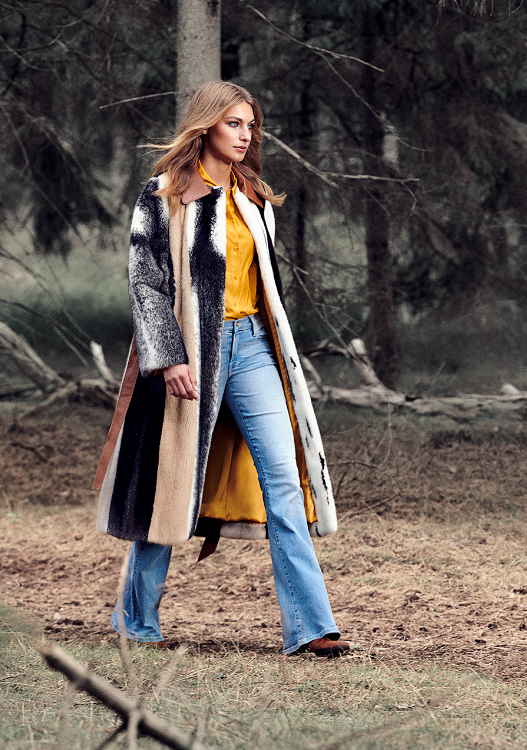Sustainable fur – A natural resource
Sustainable fur is a completely natural fashion material and is a renewable resource with exceptional thermal qualities. Fur is biodegradable and has much less impact on landfills and oceans than plastic-based synthetic textiles. The global textile market is dominated by synthetic textiles such as polyester. Not only does the production of these textiles release a significant amount of greenhouse gasses, the pollution associated with its end-of-life disposal has become a major environmental threat.
LCA proof – Real fur vs. artificial fur
The international fur trade created a life cycle analysis (LCA)* that compares the environmental impact of artificial fur with real fur. Prepared by DSS Management Consultants Inc. at the request of The International Fur Federation, the LCA adheres to the ISO system and has undergone peer review to ensure the scientific and impartial control of data, method and conclusion. The LCA demonstrates that real fur is better for the environment than artificial fur.
* ’A Comparative Life Cycle Analysis: Natural Fur and Faux Fur’ by DSS Management Consultants.
Fur is biodegradable and has much less impact on landfills and oceans than plastic-based synthetic textiles.

LCA highlights include:
- Real fur is long-lasting when well-cared for, in comparison to plastic fur.
- Real fur is often reused.
- Fur animals thrive on feed stuff produced from residual products.
- By-products from fur production can be used to produce biodiesel and fertiliser.
- Through a life cycle of 30 years, corresponding to the estimated lifetime of real fur, plastic fur consumes about 20% more non-renewable resources like oil and gas and triggers 17% higher greenhouse gas emissions.
LCA highlighted that fur is a renewable and biodegradable material when compared to synthetic fashion materials.
Fur production as a circular economy
A circular economy is a sustainable business model that aims to keep resources in use for as long as possible, extract the maximum value during this time, and regenerate products and materials at end-of-life or recycle in a way respectful to the environment – think reduce, reuse, recycle.
The highlights from the LCA prove that fur production is a great example of a circular economy. It states that real fur is long-lasting. It’s true – fur garments have an extraordinarily long-life span and can be enjoyed for several decades. What’s more, re-use of fur is common, with garments being passed down from generation to generation or sold second-hand. Repairing and re-modelling of fur garments is also popular, supporting the use of fur for as long as possible.
The feed that fur animals consume also supports the circular economy, as it is produced using fish-, pig- and chicken offal, by-products from the production of human-grade food. Although it’s the fur that is most valuable, the rest of the animal is used in a range of different bio products including green energy, fertiliser, and bio diesel.
Perhaps most importantly, the LCA highlighted that fur is a renewable and biodegradable material when compared to synthetic fashion materials. Fur will never clog landfills or break down to micro plastics, but continue to support the circular economy by entering back into nature's own cycle.
